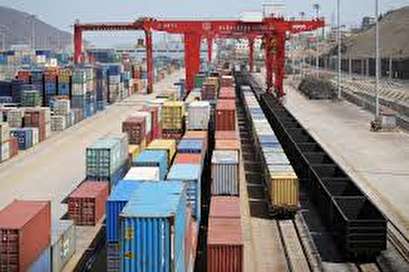TEHRAN, April 07 -“Don’t overreact,” President Donald Trump’s chief economic adviser told investors on Wednesday, when U.S. stocks were deep in the red over worries about the administration’s plan for $50 billion of import duties aimed at China.
 TEHRAN, Young Journalists Club (YJC) -“Don’t overreact,” President Donald Trump’s chief economic adviser told investors on Wednesday, when U.S. stocks were deep in the red over worries about the administration’s plan for $50 billion of import duties aimed at China.
TEHRAN, Young Journalists Club (YJC) -“Don’t overreact,” President Donald Trump’s chief economic adviser told investors on Wednesday, when U.S. stocks were deep in the red over worries about the administration’s plan for $50 billion of import duties aimed at China.
Wall Street seemed to take heart from National Economic Council Director Larry Kudlow’s calming words in a Fox Business Network interview during his first week on the job, and the market turned itself around. The Dow Jones Industrial Average rallied more than 700 points from the day’s low.
That trust looked misguided a day later, when Trump - seemingly unbeknown to Kudlow - said he had instructed an additional $100 billion of tariffs to be imposed on Chinese goods. Equities swooned again, with the Dow dropping roughly 600 points.
It wouldn’t be the first time that traders and investors got caught out by a seeming 180-degree turn on Trump policy, but Wall Street may have to get far more selective in terms of which statements, and from whom, they listen to.
“More typically, there’s a lot more cohesion in the messaging between the White House and the markets,” said Nicholas Colas, co-founder of DataTrek Research. “Certainly this administration is taking an entirely different tack. It’s been much more volatile in trying to understand what they’re trying to tell us.”
With rapid turn-about in the White House a regular occurrence, investors have made costly decisions based on the words of a rotating door of advisers and policy makers.
Peter Tuz, president of Chase Investment Counsel in Charlottesville, Virginia, said there was some “good cop, bad cop action” between the President and advisers.
“Obviously you listen to them both and you hope cooler heads eventually prevail,” said Tuz. “It makes you sit on your hands a little bit more and not make any decision that might come back to bite you should these tariffs really sink in.”
A similar to-and-fro has played out with the dollar. U.S. Treasury Secretary Steven Mnuchin said in January that he welcomed a weaker currency, Trump said he wanted to see a strong dollar, and then Kudlow in March said he would like the greenback a “wee bit stronger than it is currently.” The dollar got whipsawed.
NOISE BEGETS VOLATILITY
While long-term investors may be finding navigation tricky, the higher volatility that the remarks on trade have produced could be benefiting those traders that have short-term positions on higher volatility.
“I don’t think you really want to rearrange portfolios based on this type of volatility,” said Paul Nolte, Portfolio Manager At Kingsview Asset Management In Chicago. “This is a trader market and not an investor market.”
Wall Street’s main gauge of volatility, the CBOE VIX index, has spiked back above the closely watched 20 level.
“Any investment style that relies on volatility should now be roaring back to life, whether you’re an options trader, a momentum driven hedge fund, you need volatility to make money and you have it now,” said Colas.
Source:Reuters
Related News
Tags
Your Comment